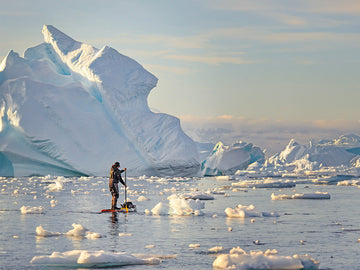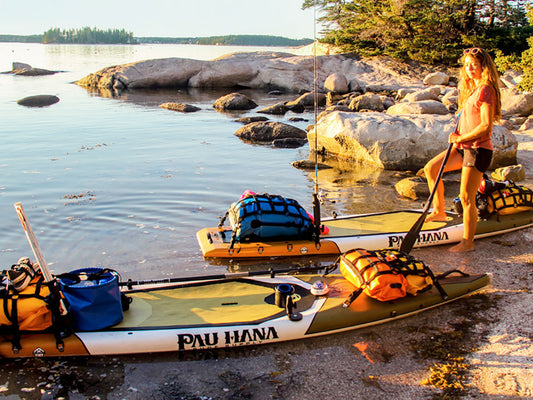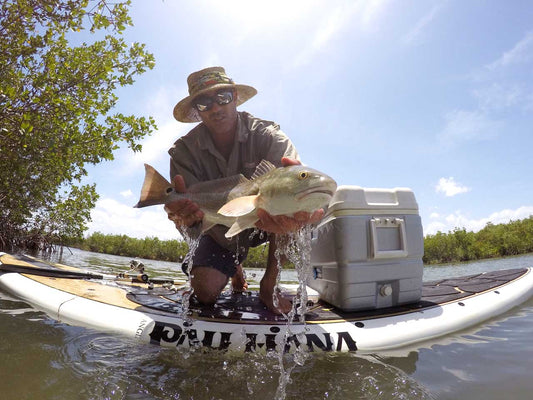Stay Comfortable and Safe on the Water: Paddle Boarding Apparel Tips for Every Weather Condition
Paddle boarding is an amazing water sport that can be enjoyed year-round, but your comfort and safety largely depend on selecting the right clothing for the water and weather conditions. Whether you’re paddling on a sunny summer day or braving cooler waters in winter, dressing accordingly is key. This guide will help you choose the right paddleboarding clothing for all weather conditions and seasons.
1. Understanding the Basics of Paddle Boarding Clothing
Choosing the right clothing for paddleboarding starts with understanding a few key principles:
- Stay Dry and Warm: Water temperatures can be much cooler than air temperatures, so wearing clothing that helps retain heat and keep you warm or dry is important.
- Layers for Versatility: The weather on the water can change quickly, so packing multiple layers of clothing ensures you’re prepared for varying conditions.
- Comfort and Mobility: Paddle boarding requires full body movement, so your clothing should be comfortable while allowing a wide range of motion while still offering protection from the elements.
- UV Protection: Even on cooler or cloudy days, sun exposure can be surprisingly intense on the water, as the surface reflects and increases the sun's effects. Choosing clothing with built-in sun protection teamed up with a sunscreen is a great option.
2. What to Wear for Paddle Boarding in Summer
During summer, you’ll likely be dealing with warm air temperatures and cold or mild water temperatures. The goal is to stay cool while protecting your skin from the sun.
- Rash Guards or Quick-Dry Shirts: These lightweight, moisture-wicking tops are ideal for warm-weather paddling. They dry quickly, protect your skin from UV rays (look for UPF-rated clothing), and have minimal or flat seams to prevent chafing. A long-sleeve rash guard offers extra sun protection.
- Board Shorts: These are comfortable and practical, allowing you to easily move while staying cool. Board shorts designed for water sports will dry quickly, making them a great choice for warm days.
- Lightweight Leggings: For those who prefer more coverage or paddle in slightly cooler conditions, lightweight, quick-drying leggings are a good option as they allow for maximum movement.
- Footwear: In warm waters, barefoot paddling is common and comfortable. If the water or shoreline is rocky, opt for water shoes with flexible rubber soles or lightweight, quick-drying sandals with good grip.
- Sun Hat and Sunglasses: A wide-brimmed hat is preferred to keep the sun off the face and neck while a cap will help keep the sun out the eyes. Polarized sunglasses reduce glare from the water and improve visibility, which can help you spot marine life or fish under the water too!
- Reef-Safe Sunscreen: Since you’re likely exposed to the sun for long periods, use water-resistant, reef-safe sunscreen to protect your skin without harming the water eco-system.
3. What to Wear for Paddle Boarding in Spring and Fall
Spring and fall paddleboarding can be unpredictable, with fluctuating temperatures and the potential for cool winds. Layering becomes important to stay warm when needed while avoiding overheating.
- Wetsuit or Wetsuit Top: If water temperatures are cooler, consider wearing a lightweight wetsuit, particularly a 1-2mm thick full suit for maximum coverage. In mild conditions, a wetsuit top or spring suit (a short-sleeved, short-legged wetsuit) provides enough warmth while allowing freedom of movement. Wetsuits work by heating water trapped in the suit, but they are also a warm, wind proof layer to wear even if you don’t plan on taking a dip.
- Neoprene Leggings or Thermal Tights: In cool conditions, pair your wetsuit top or Polartec fleece with neoprene leggings or thermal tights to keep your legs warm without restricting movement.
- Windbreaker or Waterproof Jacket: A lightweight, waterproof jacket or windbreaker can protect you from cool winds and unexpected rain showers. Look for a breathable option to prevent overheating.
- Neoprene Booties: Your feet are often the first part of your body to feel the cold. Neoprene booties provide warmth and protection, especially if you’re paddling in cold water or walking on rocky shores.
- Layered Tops: If you find a wetsuit too restrictive, wearing a moisture-wicking base layer under a lightweight fleece or wind-resistant top can offer warmth without bulk.
4. What to Wear for Paddle Boarding in Winter
Winter paddling requires extra precautions due to cold water temperatures, wind chill, and potential exposure to freezing elements. The focus is on insulation and staying dry.
- Drysuit: In cold weather, a drysuit is your best option. Unlike wetsuits, drysuits are designed to keep water out completely. They are worn over insulating layers and trap heat to keep you warm even in freezing conditions. A drysuit is ideal for paddlers who venture into cold waters regularly or expect to fall in the water.
- Thermal Base Layers: Wear moisture-wicking, thermal base layers under your drysuit to retain warmth without sweating. Choose layers made from materials like merino wool or synthetic fabrics that dry quickly and regulate temperature.
- Neoprene Gloves: Your hands are exposed to wind and water while paddling, and in winter, they can get cold fast. Neoprene gloves provide insulation while still allowing you to grip your paddle effectively. There are lots of different styles of neoprene gloves, from mitts to fingerless options, so shop around for your preferred style.
- Neoprene Booties or Waterproof Boots: To protect your feet from cold water, opt for 3-5mm thick neoprene booties or insulated waterproof boots. These keep your feet warm, even if they’re submerged.
- Neoprene Hood or Beanie: Heat escapes from your head quickly in cold weather. A neoprene hood or wooly beanie offers extra warmth and protection from the cold wind.
- Waterproof Layers: In extreme cold, layering with fleece under your drysuit or wearing a waterproof top and bottoms over a wetsuit provides added protection from the elements.
5. Adapting to Changing Weather Conditions
Weather can be unpredictable, especially on the water. Here’s how to deal with sudden changes:
- Layer Smartly: Think about dressing in layers that can easily be added or removed. Start with a moisture-wicking base layer to keep sweat off your skin, followed by an insulating mid-layer (like fleece), and a waterproof outer layer for wind and rain protection.
- Waterproof Storage: If you expect weather changes, you can bring a waterproof dry bag with extra clothing such as a windbreaker, hat, or gloves. This ensures you can adjust your attire as the weather changes without having to return to shore.
- Temperature Check: Always check the water temperature before heading out, as cold water can lead to hypothermia even if the air is warm. Dress for the water temperature rather than just the air temperature.
6. Footwear for All Conditions
Choosing the right footwear for paddleboarding is as important as your clothing. Here are a few considerations:
- Warm Weather: If the water and air are warm, barefoot paddling is a nice option, but water shoes or sandals with good grip can protect your feet from rough surfaces when getting to or from the water.
- Cool Weather: Neoprene booties or water shoes with a thermal lining will keep your feet warm while offering traction on the board.
- Cold Weather: In winter conditions, thick neoprene booties or insulated waterproof boots are necessary to prevent heat loss and protect your feet from freezing water and wind chill.
7. The Takeaway: Prioritizing Comfort, Safety, and Adaptability
Selecting the right clothing for paddleboarding involves more than just comfort—it’s about safety and ensuring your experience on the water is enjoyable in any weather condition. By dressing for the elements, using moisture-wicking and waterproof materials, and layering smartly, you’ll be prepared for anything from hot summer days to cold winter excursions. Always consider both air and water temperatures, and don’t hesitate to invest in gear that enhances your paddleboarding experience and keeps you safe year-round.





